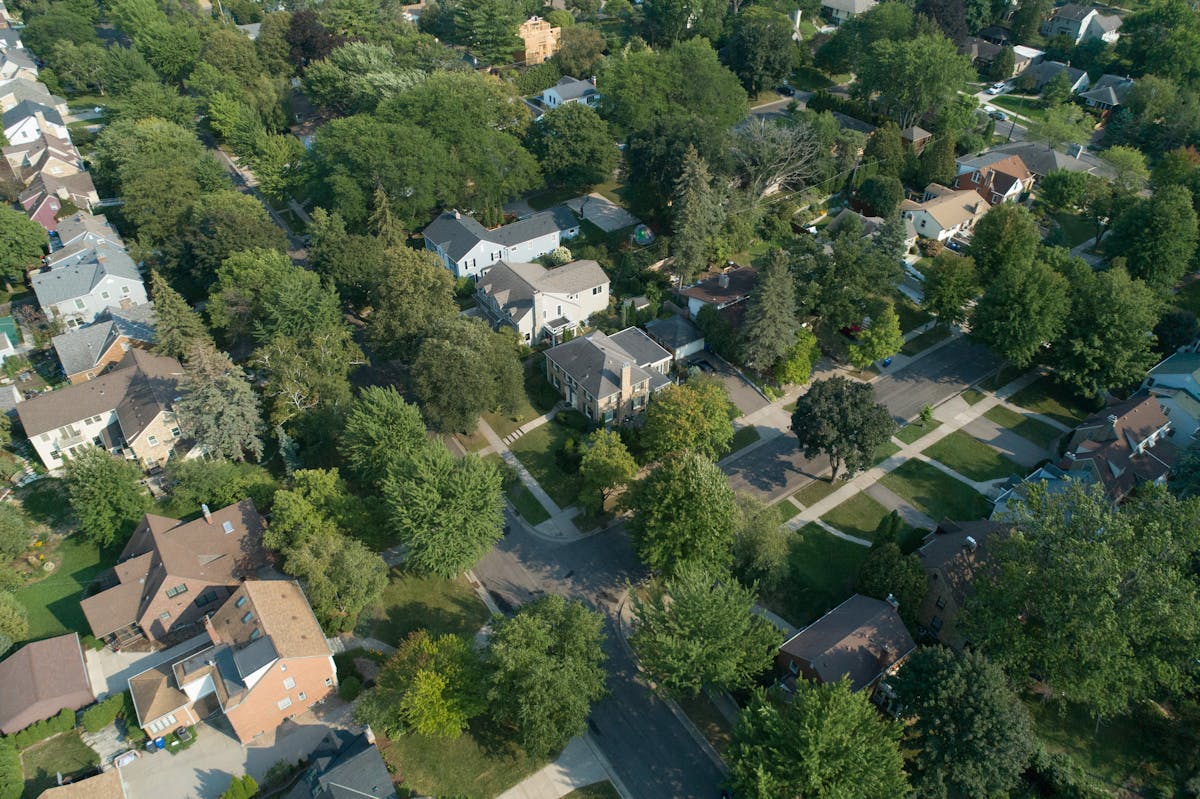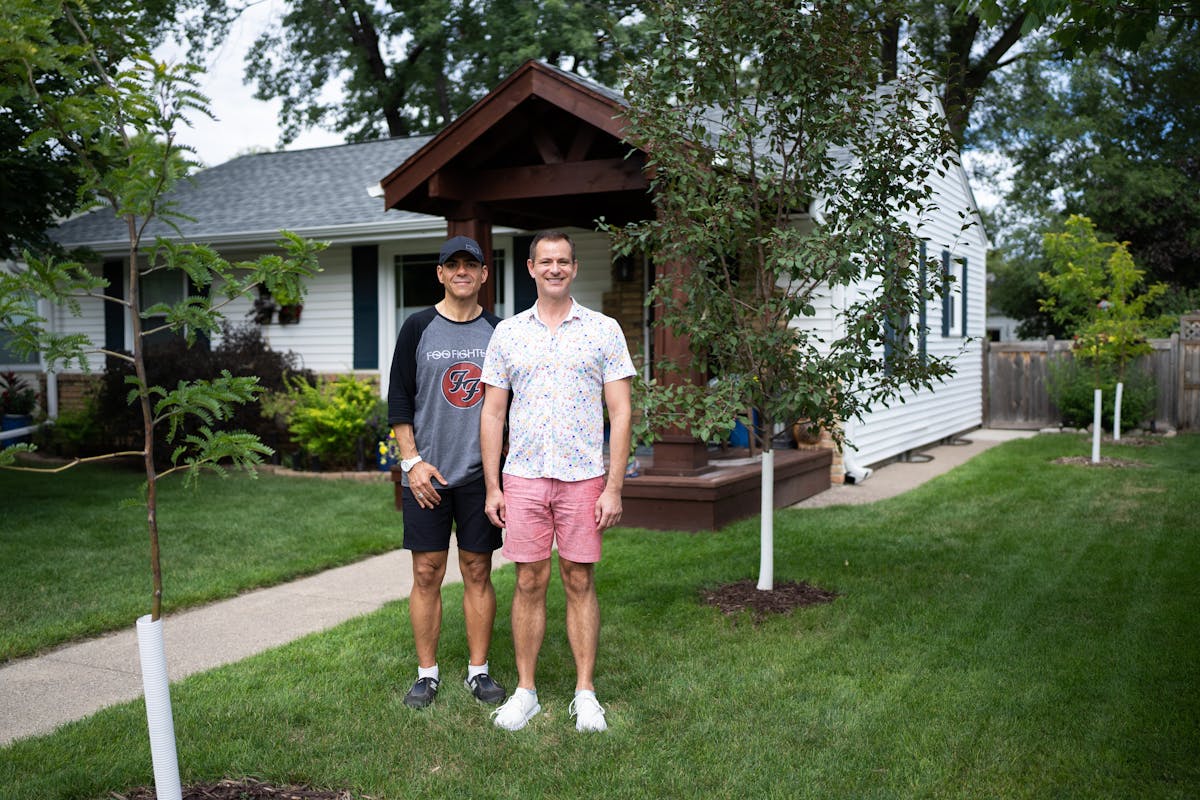How planting trees fights racial inequity and climate change in Twin Cities' poorest neighborhoods
The Metropolitan Council data scientists quickly recognized a pattern when they began mapping the Twin Cities' patchy tree canopy.
Neighborhoods with the fewest trees were in the same areas where discriminatory lending practices had segregated people of color and freeway construction had plowed through Black neighborhoods. Communities with abundant tree cover had not been touched by those segregation policies or massive infrastructure projects that uprooted entire communities.
"Once you see it, and once this is pointed out to you, you just can't unsee it," said Ellen Esch, a senior data scientist with the Metropolitan Council.
Fixing this long-standing inequity in tree cover has taken on new urgency. Trees are now recognized as crucial protection against the increasing dangers of heat and flooding due to climate change, and as a vital tool to absorb the gases that are making the planet hotter.

St. Paul's Highland Park is more lush and less exposed than the lower-income Frogtown.
The Met Council, a regional planning authority, cannot impose mandates to fix this problem, so planning officials are offering data and guidance for cities and nonprofit organizations to take action. Their report, called Growing Shade, identifies parts of the metro area where the Met Council sees environmental injustice, as well as other areas where insufficient tree cover raises concerns about public health and climate change.
Guided by this new data, recent work to reforest private property in the metro area has focused on encouraging rather than requiring homeowners and landlords to do it.
Mandates can also fail. Esch said planners are always wary of "lessons learned from Detroit" — where a 2014 planting program led a quarter of residents to say they didn't want a new tree, partly because they saw it as a burden the city was imposing on them.
So far, a small constellation of city governments and nonprofit groups has seized on the data to launch new programs or get more support for existing ones. Esch said she and her Met Council colleagues hope that as word about Growing Shade spreads, these projects will, too.
And in the coming years, the Met Council's data may shape how new federal dollars can fill the gaps.
The Inflation Reduction Act passed by Congress in August, the largest climate spending package in U.S. history, directs $1.5 billion to tree planting in urban areas. The money will be available through federal grants that cities, counties, states and nonprofits must apply for.
'Tree grief' in Frogtown
In St. Paul's Frogtown neighborhood, the tree gap is especially severe — the area has the thinnest canopy on private land in St. Paul, and a population that's 75% residents of color.
Frogtown resident Joseph Sebast lost a large tree to rot. He moved to Minnesota from Seattle last year, expecting the tree to be a part of his family's life, and that they'd be worrying more about the winter chill than the summer heat.
Now he's lost the shade that would protect his house as the sun rose. Sebast's electric bill has gone up significantly since he bought two additional window air conditioners. He hopes to plant a new tree, but there are obstacles.
"Even though I have a good salary and pretty good work-life balance, I still am having a hard time finding the money and the time to do the research I need to be able to figure out what trees I can plant ... and then figuring out how to plant it myself," Sebast said.
Martha Burton's family is still heartbroken over the first tree they lost when they moved to Frogtown. She comes from a long line of tree lovers, and she was excited to have an arborist come and get their maple ready for winter.
Burton was at work one day when she got a call letting her know that the tree was a hazard and had to come down immediately. Her family was left with a much hotter house and a lot less privacy.
"There's a lot of what I like to call tree grief in Frogtown. Trees are such place definers, and there's so few trees in Frogtown that when you lose one, you really, really feel it," said Burton, who has since moved to Highland Park.
Frogtown Green, an initiative launched in 2008, is working to make up the gap of these lost trees. The majority of residents are renters, so the group educates landlords and property owners about the financial benefits of trees. So far, they have planted 600 trees of their goal of 1,000 by 2025.
The program isn't just about making yards more comfortable.
"Our basic intent is to cement in the minds of everyone who lives in Frogtown that one or more trees are going to help address climate change," said founder and director Patricia Ohmans. But it can be challenging to persuade distant property owners to participate, she said.
Climate motivation
Much like in Frogtown, climate change was also a major motivator to spread canopy across St. Louis Park, Mayor Jake Spano said. The city's tree cover ranges from more than 50% in some residential areas to others that fall below 20%.
"Our climate has brought into sharp focus the importance and value of trees," Spano said. "It's taken on greater urgency and interest in the past decade."
But with a new tree planting program, the city is now responding to two new stressors — a hotter atmosphere and the emerald ash borer, a formidable pest that has established itself in a corridor around the Twin Cities and extending southeast that the Department of Natural Resources describes as "generally infested."
The city had been able to stay on top of replacing dead ash trees in public areas, but "that's a small portion of where our canopy is in St. Louis Park," said Michael Bahe, the city's natural resource manager.
Beginning this spring, St. Louis Park offered trees through Tree Trust. It was a full-service operation, including visits from an arborist to find the best planting spot, and workers to put them in the ground.
Using the Met Council's data, the city set its prices: Residents pay $35 in areas that are environmental justice priorities, $115 for an ash replacement, and $150 everywhere else.
Of the 27 trees planted so far, 22 were planted in the city's priority areas. This fall, Tree Trust is slated to plant 65 more.
"What St. Louis Park is doing right now is pretty innovative, in that it's really using contemporary data to influence activity," said Karen Zumach, Tree Trust's director of community forestry.

Homeowners Matthew Vick, left, and David Dorava of St. Louis Park have made the most of the city's full-service tree planting program, which costs residents as little as $35 a tree.
Cooling down houses
David Dorava, a public school teacher, lives just north of Minnetonka Boulevard, in an area with the Met Council's second highest priority score for environmental justice concerns in St. Louis Park. The canopy cover in Dorava's neighborhood is about 28%, far below the council's 45% goal.
Dorava and his partner, Matthew Vick, received three discounted trees from the city's planting program — bringing the number of trees on their small house plot to 11.
"We both came from Minneapolis, where they have those big, huge, gorgeous canopy trees," Dorava said. "We just wanted more shade and greenery."
The couple has worked to create a miniature urban forest of sorts, because the sun used to heat up their property so much that it warped a plastic section of their front door.
Dorava and Vick ended up placing their three new honey locust trees to shade the side yard and front lawn. Eventually, the fast-growing canopy of at least one of the trees should extend over the sidewalk, too.
Vick and Dorava are also talking to their neighbors, trying to encourage others to plant trees as well.
"It just helps people to walk down the sidewalk and be able to have some shade, instead of walking in the blazing heat," Dorava said.
Their neighborhood, along Texas Avenue, is not totally devoid of greenery. But two houses, both subdivided into duplexes, stand out for not having trees in their front yards.

An absence of trees on rental properties across from David Dorava and Matthew Vick's house illustrates that landlords are less likely to take advantage of municipal tree-planting programs.
Landlords are some of the toughest property owners to persuade to plant a new tree, Zumach said.
St. Louis Park doesn't have rules governing trees on private house lots. Commercial developments have specific tree protection or replacement rules, but for residences, "people are free to do what they wish with the trees on their property," said Bahe, the city's natural resource manager.
Mayor Spano said elected officials have not discussed rules that would protect trees on single family lots or mandate them. "Our approach has been to collaborate rather than to legislate," he said.
Others across the metro area are taking this approach, too.
Green Minneapolis, a nonprofit focused on natural spaces in the city, has a goal of increasing the region's canopy by 30% through both planting and maintaining millions of trees. The work will be funded through the sale of carbon credits, which corporations can purchase to offset their carbon footprint, and pandemic relief funding.
In August, Minneapolis Mayor Jacob Frey announced the creation of a new city tree coordinator position to expand tree planting on both private property and parkways in lower income neighborhoods. Pandemic funds will target "green zones" on the North Side and South Side of Minneapolis, lower income areas with fewer trees.
"Imagine a city employee coming to your door and asking if you want an additional tree and then going down the entire block and doing the same thing," Frey said.
Ultimately, the lack of awareness of tree planting programs may be what holds some people back.
Greg Lawrence owns and rents out one of the duplexes across from Vick and Dorava in St. Louis Park. He recently invested significant time in refreshing the exterior of the house. His wife painted the brick a dark blue, and together they installed large cedar shutters.
But even though the sun bakes the house for much of the day, he said he hadn't considered planting a tree there before.
"It's so dry and so hot there that it makes perfect sense to plant a tree," Lawrence said. "I never even had the thought."
Lawrence said he has tried to be attentive to the properties he owns and make sure they're in good condition for the tenants and for the neighborhood. But he has focused more on the interior of his rentals, rather than what's outside.
After hearing about the city's program, he said, "I'll give them a call, and we'll get a tree in there this fall."
